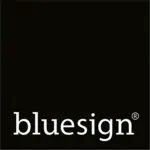CE standards
Tested for your safety
Users of our clothing often work in places where high visibility or protection against the cold and rain is required. Sometimes they also need protection against droplet-borne infection or protection against flames, to be safe and secure. That's why our garments are tested and CE labelled, making it clear which special protection requirements our garments comply with.

Ensembles for temperatures below -5°C. This standard guarantees that the clothing ensembles’ characteristics regarding insulation, air permeability/windproofness and vapour permeability/breathability have been tested. The tests for ENV 342 measure the ensembles’ insulation capacity with a minimum CLO value of 2. The certification is only valid for clothing ensembles worn with a Taiga base layer underneath..

The standard regards testing of waterproofness, windproofness and vapour permeability of fabric and seams. It does not cover the garments’ technical design. The standard is graded into four classes. Taiga only tests in the highest class.

High visibility (HV) clothing is, since 2013, certified according to this international standard. The standard states that the fluorescent fabric (background material) must also be tested after at least 5 washes. The stated maximum number of washes for the garment is based on laboratory washes and is not the only factor affecting the lifetime of the garment. Other factors impacting its lifetime are use, care, storage, etc. If the care instructions do not specify the maximum number of washes, then the material has been tested after at least 5 washes. The pictogram now only shows the protection classification. Class 3 is the highest classification. The reflective material must meet the specifications under the previous highest class and is therefore not indicated. The effectiveness of the protective garment is reduced if soiled. The garment must be checked on a regular basis.

Protective clothing that prevents electrostatic charge. Suitable for work in explosive environments. The garments’ characteristics are permanent, regardless of the number of washes. Antistatic footwear is required for maximum protection..

The standard specifies requirements and test methods for protection against heat and flame in various types of use. The standard does not apply to welding, smoke diving or similar. Specific standards apply in these situations. The standard is divided into 6 heat sources, A-F. Taiga's range of garments falls under categories A, B or C. Heat source A: Limited flame spread. Heat source B: Thermal insulation against open flame (thermal insulation is divided into 3 classes where B3 gives best protection). Heat source C: Insulation against radiant heat (thermal insulation C is divided into 4 classes where C4 gives best protection).

We constantly strive to only work with materials and accessories that are certified according to Oeko-Tex and/or Bluesign. a global certification system covering a range of criteria and requirements, which means that our materials do not contain harmful substances. For more information, see www.bluesign.com eller www.oeko-tex.com
